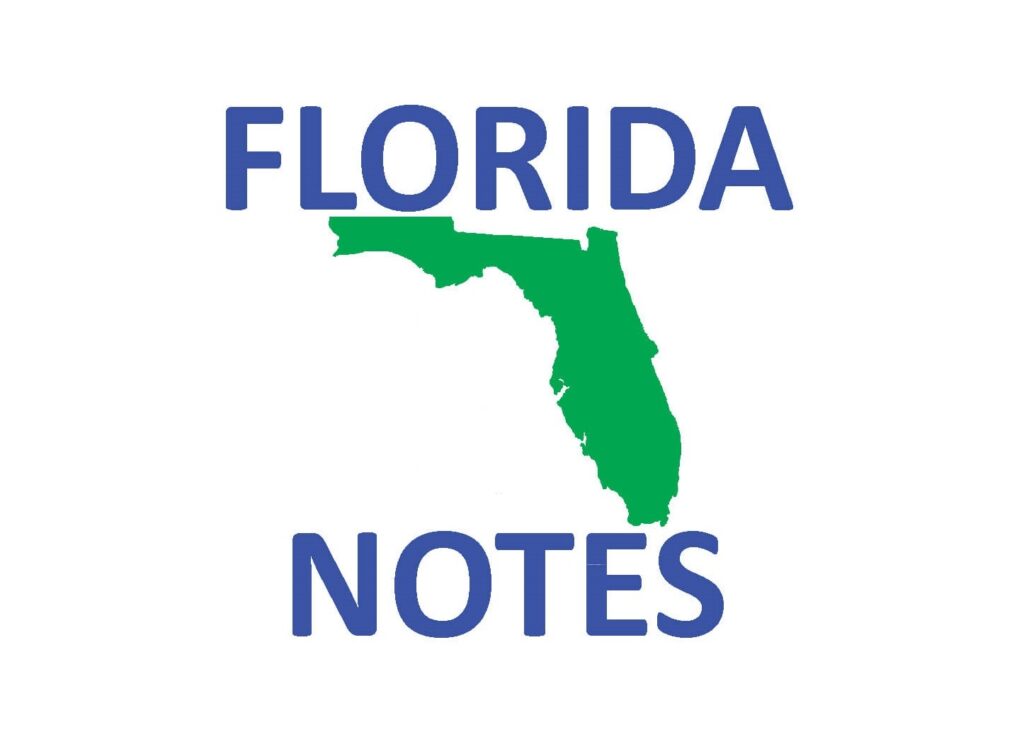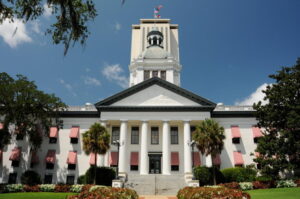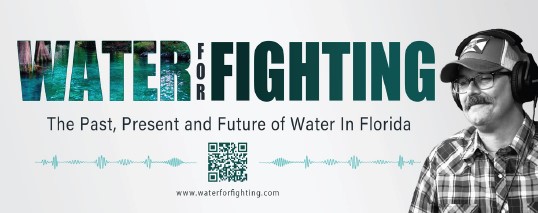US Corps, SFWMD take on scoping meetings

The U.S. Army Corps of Engineers, Jacksonville District, and the South Florida Water Management District (SFWMD) recently completed two National Environmental Policy Act (NEPA) meetings to receive public input for scoping the Feasibility Study and Environmental Impact Statement (EIS) for the Lake Okeechobee Component A Reservoir (LOCAR).
The SFWMD is conducting the studies and exploring opportunities for above-ground water storage north of Lake Okeechobee.
The study area covers a large portion of the Lake Okeechobee Watershed north of the lake itself and will provide ecological benefits to the lake and northern estuaries.
The proposed LOCAR is intended to store excess water in the northern watersheds and release the excess at times when it is beneficial for the region. This increased storage capacity is anticipated to reduce the duration and frequency of high and low water levels in Lake Okeechobee, which are harmful to the lake’s ecology.
The reservoir will also help reduce discharges from Lake Okeechobee to the northern estuaries frequently impacted by related algal blooms.
USGS Revises Florida Aquifer System Framework
The United States Geological Survey (USGS) has issued Revised Framework for Hydrogeology of the Floridan Aquifer, the principal source of freshwater for agricultural irrigation, industrial, mining, commercial, and public supply in Florida and southeast Georgia.
This publication provides an update of the hydrogeologic framework of the Floridan aquifer system underlying Florida and parts of Georgia, Alabama, and South Carolina.
This is the first update of the framework in more than 30 years and it incorporates new borehole data showing a detailed conceptual model that describes the major and minor units and zones of the system.
This update will allow authorities and resource managers to more accurately monitor aquifers, improving their ability to protect the resource and determine the near- and long-term availability of groundwater.
10 Tips to Save Water for Water Conservation Month
The SFWMD has recently shared 10 easy-to-follow tips on how to reduce monthly water bills and conserve hundreds of gallons of water, both indoors and outdoors.
One of the main culprits of water waste, as highlighted by the SFWMD, is leaks, which can occur both inside and outside of your home. The District suggests using your water meter to identify any leaks.
To do so, turn off all faucets and water-using appliances, and make sure that nobody uses any water during the testing period. Wait for the hot water heater and ice cube makers to refill. Go to your water meter and take note of the current reading. Wait for 30 minutes, making sure that no water is used during this time. Afterward, read the meter again. If you notice any changes in the reading, it is likely that you have a leak that needs fixing.
Nature Article Finds Acceleration of U.S. Southeast and Gulf Coast Sea Level Rise Amplified by Internal Climate Variability
As per an article published in Nature, there is evidence indicating that there has been a rise in the global mean sea level (MSL) acceleration since the 1960s. However, detecting this phenomenon at a local level has been a challenge due to the natural variations in the rate of MSL change.
A recent report has studied tide gauge records along the U.S. Southeast and Gulf coasts, and it has been found that there is an unprecedented MSL acceleration of over 10mm per year since 2010. This acceleration is the highest recorded in at least 120 years. The report attributes this acceleration to an ocean dynamic signal that surpasses the response from historical climate model simulations. The study’s implications are significant in the context of predicting the impact of rising sea levels on coastal communities and infrastructure.
St Johns River WMD Launches Redesigned General Information Permitting Webpage
The St. Johns River Water Management District (SJRWMD) has recently introduced an updated landing page on their website to provide the public with more comprehensive information about their permitting program. The new landing page features a photo-based interface that offers easy access to an overview of the permitting groups work. However, it’s important to note that this new website is not designed to replace the existing ePermit portal that is used for applying or tracking permits. The previous related URLs are still available, and users can access them by visiting sjrwmd.com/permitting.
One of the most useful features of the newly added website is its map-based interactive tool. This tool allows visitors to search for the latest permits by city, county, or specific address. The permits are color-coded with dots that provide a high-level overview of the permit, and users also have the option to view additional details. This interactive tool is especially helpful for those who want to stay informed about the latest permits in their area.
Overall, the SJRWMD’s new landing page is a welcome improvement in terms of user experience. It provides a user-friendly interface that is easy to navigate, and it offers more comprehensive information about the permitting program.
National Fish and Wildlife Foundation Supports Development of Florida Gulf Environmental Benefit Fund Restoration Strategy
The National Fish and Wldlife Foundation (NFWF) has announced an award of up to $4.5 million to the Florida Fish and Wildlife Conservation Commission (FWC) and other entities in Florida to support the development and implementation of programs and projects under the Gulf Environmental Benefit Fund.
This new planning effort is intended to serve as a framework to restore and conserve Florida’s Gulf Coast natural resources. The team will identify priority projects for future funding consideration from NFWF’s Gulf Environmental Benefit Fund. The projects receiving funding will remedy harm or risk of future harm to natural resources that were affected by the 2010 Deepwater Horizon oil spill.
The NFWF recalls a U.S. District Court approved two plea agreements resolving certain criminal charges against BP and Transocean related to the Deepwater Horizon oil spill in 2013. Provisions within the plea agreements direct a total of $2.5 billion to the National Fish and Wildlife Foundation over a five-year period. And from that amount, NFWF will receive more than $356 million for projects to protect or restore natural resources in Florida.
SFWMD Conducts Lower East Coast Water Supply Plan Stakeholder Meetings
The SFWMD has announced the first public meeting seeking community input on the proposed 2023 Lower East Coast (LEC) Water Supply Plan Update. The Water Supply Plan will assess current and projected water needs in the LEC Planning Area through 2045, and includes Palm Beach, Broward, and Miami-Dade counties as well as most of Monroe County and the eastern portions of Hendry and Collier counties.
The meeting will be available via Zoom and the meeting materials will be posted to the Lower East Coast Water Supply Plan webpage before the meeting.
The meeting will be live streamed and recorded. At the conclusion of the meeting, the recording will be posted to the District’s YouTube page.
Participation is strongly encouraged. Public input is critical to ensuring the water supply plan update addresses the needs of the region.
The Florida Legislature Addressed Local Fertilizer Management Ordinance Restrictions in the State’s Budget Proposal
The Florida Legislature has passed an amendment that restricts local governments from implementing fertilizer management restrictions. This addition prevents local officials from enacting “fertilizer management ordinances” that limit fertilizer application, thus keeping fertilizer management under state control.
The Miami Waterkeeper are opposed to this amendment and have previously supported ordinances such as the county-wide fertilizer ordinance in Miami-Dade County in 2021. This ordinance is one of the strictest in the state and prohibits the use of fertilizer during the rainy season to prevent fertilizers from washing into stormwater collection systems. This runoff can cause algae blooms, seagrass die-off, and fish kills in surface waters.
With the addition of this legislative language for 2023-24, more than 100 local governments will be prohibited from adopting or changing their fertilizer management ordinances. The Miami Waterkeeper advocates for other locations to replicate Miami-Dade’s strong fertilizer ordinance. They warn that waterways across the state are approaching a dangerous tipping point and immediate action is necessary to preserve them.
“Miami-Dade County’s strong fertilizer ordinance should be replicated in other locations. While they say it’s only a year-long preemption, waterways around the state are tipping dangerously beyond the point of no return, and we must act now to save them.” Miami Waterkeeper notes.•





















